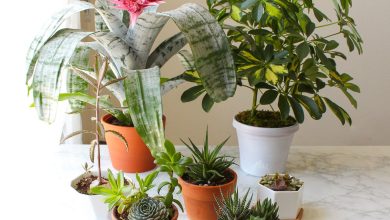Sow Lawn and have a Dream Garden: Step by Step
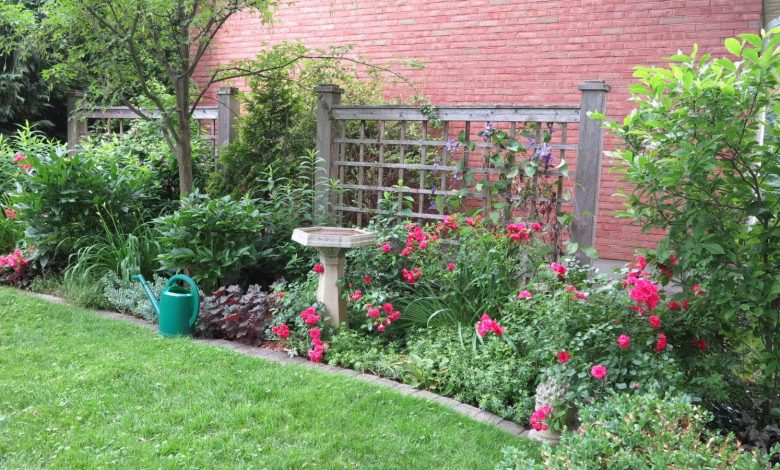
Will you agree with me thatgrass makes any garden beautiful.
It is a herb (such as grass, or mint) that if well cared for gives a great appearance wherever it is.
However, it is not entirely easy to plant it and make it grow as it should.Unless you know the proper steps and tricks.
You are in luck.
I guarantee you thatif you read the articleYyou apply what we say hereYou will have no problem planting a beautiful, green and vigorous lawn in your garden.
Sow Lawn Step by Step:
- When? Non-extreme climates. In spring and autumn.
- Where? Sunny place. It needs a lot of sunlight.
- Growing time? From 7 to 20 days, depending on the variety (first shoots).

- How do we prepare the land? tilling. It is watered weeks before sowing, for several days. It is also paid in advance.
- How do we pay? Decomposed organic matter (such as manure). Weeks before.
- How do we water? By spray, ideal. We do not want to flood and give it too much water.
- How often do we water? Every day until the grass has sprouted and grown a few inches. When the grass has grown it can be spaced, depending on the heat (in summer daily).
- How do we sow? Spread the seeds. Between 30-40 grams per square meter of seeds.
- How do we reap and can? Frequently and altering the meaning and direction.
- Plagues and diseases? Tipula, White Mold, Dollar Stain and Royal.
First: What do we need to sow grass?
It is important to take into account the tools and elements that we are going to need to plant a robust and quality lawn.
Rake
First of all we will need a rake to remove all the stones and leaf litter in the land where we are going to plant our lawn.
It is not essential but obviously it will take away a lot of work.
Motocultor or motorized hoe
It is not an essential tool, but it will obviously help us a lot when preparing the land to plant grass.
Why? It will eliminate many weed seeds that we do not want and will also aerate the soil, leaving it soft and not very compact. Ideal for the grass to grow in conditions.
quality land
Turf is grass that can be demanding, especially at first.
It is important to prepare the land properly, not only removing stones, leaf litter and «breaking» it with the power tiller, but also using quality soil. Rich in minerals and nutrients.
Using good soil is a determining factor when it comes to having a resistant and beautiful lawn.
grass seed
Do not forget the most important. Grass seeds.
The variety of grass you want to plant is decisive.
There are types of grass that better withstand high temperatures in summer. Others are more drought resistant.
Others are much prettier, but also more delicate.
We recommend these:
flattening roller
It is not essential either, but obviously if after loosening the soil with the tiller, depositing fertilizer and quality soil, we use a roller to flatten the soil, it will be in better conditions (by far) for the grass seeds to germinate.
sprinkler irrigation system
Once the seeds are installed, during the first weeks we will need to water and the best way is by sprinkling.
Installing a good, automated sprinkler system will save you a lot of headaches. What should we buy?
The next:
Turfgrass is a type of grass that provides a multitude of benefits to the ecosystem and also plays a major role in the health of our environment.
Among other things, a healthy lawn protects the soil from erosion and helps, like trees, to transform carbon dioxide into oxygen.
In fact, in certain circumstances, outdoor grass can contributemore than three quarters of the oxygen we breathe.
To give an example, just in a 50 square foot area, enough oxygen can be produced daily for four people.
As if the above did not seem like much, grass also helps reduce energy consumption thanks to its cooling capacity.
Various studies have shown that, comparatively speaking, air temperatures over grass can be up to 40 degrees cooler than those found above a paved area.
Finally, the lawn also provides a pleasant and very aesthetic appearance to any area where it is planted. Of course, its ubiquity makes us take it for granted and may lead us to believe that it grows on its own.
The truth is that certain factors are required to be able to sow grass successfully.
Main characteristics of the lawn
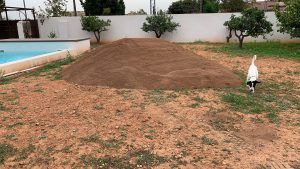 Lawn is the name given to certain species of grasses of the Poaceae family, which reproduce by forming a dense and green cover.
Lawn is the name given to certain species of grasses of the Poaceae family, which reproduce by forming a dense and green cover.
Specifically, only 20 species of grasses can be considered lawns.
Basically, they are used as ornamental plants in lawns and gardens or as land for the practice of various sports and recreational activities in the field.
The most important qualities that a good lawn must tolerate are:
- The strict cut.
- The trampling.
- The dryness.
- The cold.
- The diseases.
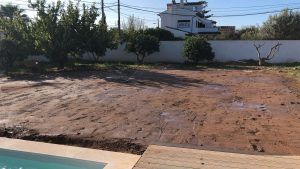 For proper development they must have a strong root system that prevents uprooting and forms a dense and continuous plant cover in a short space of time.
For proper development they must have a strong root system that prevents uprooting and forms a dense and continuous plant cover in a short space of time.
To achieve a good quality lawn, several factors must be taken into account, such as: the type of soil, drainage, the choice of species and varieties, the type of irrigation, the subscriber, etc.
Grass species, according to their climatic adaptation, are classified as:
Subtropical and Mediterranean climate species
They are characterized by extraordinarily withstanding aridity and salinity, which makes them ideal for use in the coastal areas of the Mediterranean basin, the Balearic Islands and the Canary Islands.
temperate climate species
 It is important to determine what variety of grass you want to plant.
It is important to determine what variety of grass you want to plant.
It tolerates frosts well and grows a lot during spring and summer. There are different varieties: the English Ray-grass, the common bentgrass, the red fescue, red fescue, etc.
In both cases, it is advisable to sow a mixture of different species, properly combined so that they complement each other and give a satisfactory result.
The reason for doing it this way is to obtain a green lawn throughout the year, taking advantage of the different cycles of the different species.
The following table shows some of the most common mixes:
Before sowing grass
Study the ground conditions
Some questions that you should answer before choosing the variety that best suits your needs are:
- Does the soil where you want to plant grass have good drainage?

- Does it dry out easily?
- How often do you want to water your lawn?
- How many hours a day does it receive sunlight?
- Are there frequent winds and of what intensity?
- How much shade will it receive per day?
- What is the purpose of the lawn? Is it for decorative purposes or do you plan to give it a rough use: sports, pets, etc.?
- How often do you want to prune it?
The variety of grass you want to plant will determine how often you need to water or mow. There are varieties of grass that are much more resistant to foot traffic, heat or lack of water.
When to plant the lawn?
In general terms, the best times to plant grass are spring and autumn, since they do not have climates as extreme as summer and winter.
In the fall, grass tends to grow faster, as the ground has warmed up enough throughout the summer.
Get the grass seeds

Obviously the first thing is to get grass seeds.
You can find various providers online. Acquire the ones that you consider best fit your needs.
Calculate the area where you want to grow the grass to know how many seeds you should buy, based on the variety you have chosen.
There are currently several calculators online that help you determine the amount of seed to cover a certain area, depending on the different varieties of grass.
Water the soil for a few weeks
Watering the soil before planting grass will allow you to solve very important things:
- On the one hand, it will help you analyze the quality of the drainage of the land and, on the other hand, it will help you to germinate all the weeds that could be in a dormant state and that can spoil your crop.
- Regarding the drainage system, it is important that you evaluate if the land where you plan to sow tends to flood. If so, it is highly recommended that you take care of this problem before anything else, as this will prevent you from further complications in the future.
- A land with drainage problems will cause your lawn to have fungal problems or simply not develop well.
- You can try leveling the ground, adding topsoil in those areas where water tends to puddle.
- Another way, a little more expensive, is to install a drainage system. This option, however, is only recommended as a last resort.
- If during irrigation you notice that weeds have grown on the ground, remove them as soon as possible.
- If you have moss, you can get rid of it with lawn anti-moss and a bit of iron sulfate.
Plow and prepare the ground
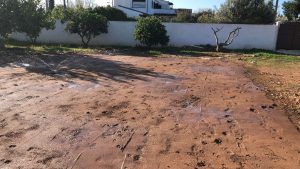 Loosen the soil layer.
Loosen the soil layer.
Use a rake or hoe to do this. Be sure to break up any clumps and clumps of dirt you find, so the ground is even.
Later, compact it with a roller. The texture of the soil does not need to be very fine. The important thing is that there are no lumps and that the ground is even, at the same level.
Also, remove debris from the ground such as rocks or sticks. If you find an anthill, apply an anti – ant product.
If you just want to cover up gaps in your already seeded lawn, use a garden hoe to break up the soil in the gaps. Cut the rest of the grass as short as you can.
fertilize the soil
The lawn requires a layer of fertile soil between 7 and 10 centimeters.
Add topsoil to ensure good growth. Topsoil is a mixture of compost, sand, and garden soil. This mixture will also help improve your drainage.
One week before sowing grass, it is advisable to fertilize the soil with a fertilizer that promotes seed germination.
Nutrient needs vary, depending on the type of grass. It is advisable to use a balanced fertilizer, considering the three basic macronutrients: nitrogen, phosphorus and potassium, as well as secondary elements such as magnesium, iron, zinc and manganese.
Sow the grass seeds
- Make sure the topsoil is dry, but the inside is moist.
- Then disperse the seeds.
- If the area to be covered is very large, it may be convenient for you to use a lawn spreader car, which is responsible for spreading the seeds evenly and continuously. If the area is small instead, you can spread the seeds yourself.
- You must place the amount of seeds recommended by an expert or by the online calculator. This, to make sure that your grass grows even and strong.
- On average, the average ratio is 30-40 grams per square meter. If the proportion is less, the grass usually looks uneven.
- Conversely, in areas where you sow too many seeds, the grass will grow thinner as the seeds have to fight for limited nutrients.
- Once you have finished placing the seeds, protect them with a thin layer of soil over them. For this, a light raking is enough. Do it gently, trying not to move them from their place.
- Once your land has been planted and gently raked, it is better not to step on it or disturb it any more. It is also not recommended that you roll over it to flatten the soil.
water the earth
- Water the soil lightly. Make sure it is very wet.
- Remember that since the seed is in the upper layer of the soil, you must always keep it moist.
- Do not use a strong stream of water or you risk removing the seeds you have sown.
- You will need to water every day until the grass has sprouted and grown a few inches. To do this, we recommend watering three times a day, a few minutes each time.
- The first watering in the morning, during sunrise. The second, at noon and the third at 6 in the afternoon, as the sun sets.
- At night it is not necessary to water, since there is no sun, the humidity is maintained in the earth.
- The ideal is to keep between 2 and 5 centimeters moist surface. If your lawn starts to look dry or turn brown, water it to revive it.
- Don’t water it after a heavy rain or it could drown.
- As the grass grows, watering will be reduced.
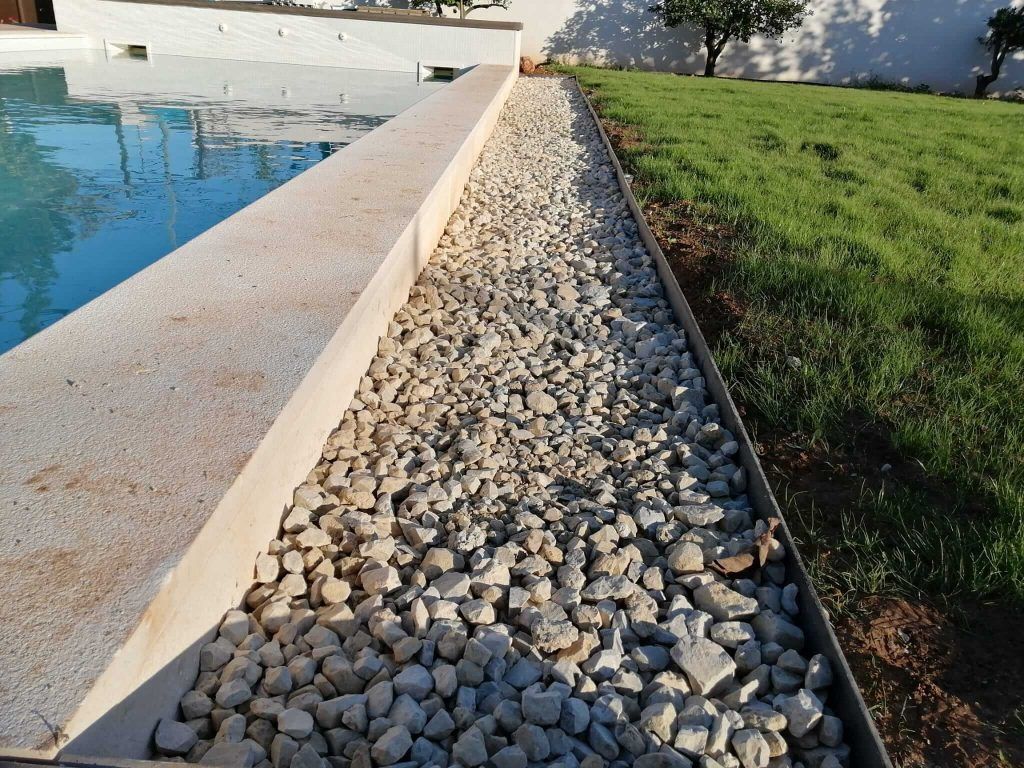
Protect the ground
Remember that the seeds and the first sprouts are fragile during the first weeks and will not grow properly if the ground is constantly stepped on or mistreated.
Put up a caution sign or install fences to prevent people from passing.
The first shoots will appear between 7 and 21 days after sowing. When the grass reaches a height of 5 to 8 cm, you must remove the remains of stones and leaf litter, using a rake with fine spikes.
Define the irrigation system
Most of the problems that occur in lawns occur due to a bad irrigation system.
Whether you do it automatically or manually, you should pay attention to the following points:
- It is essential that your lawn is watered during times of drought.
- Remember that excess water causes an increase in diseases, removes nutrients and causes shallow roots.
- The frequency of watering depends on the region where you live. However, you can determine it based on the appearance of your lawn. Irrigation is recommended when your lawn turns bluish green or footprints remain marked on it.
- As the need for water increases, the grass begins to shrivel and turn gray in color. If this happens, you will need to water it immediately and it will recover considerably quickly.
- The most recommended system is by sprinkling. It is suggested that the automation and layout of the pipes be perimeter and covering the entire field in a homogeneous way.
- After watering, the soil should be moist up to 15 centimeters deep.
- Thoroughly moistening the entire root zone is recommended.
- The irrigations can be spaced between 2 or 3 days.
- It is recommended to apply irrigation at night or first thing in the morning, since at this time the wind does not interfere with irrigation and there is no evaporation of water.
We recommend installing an automatic sprinkler irrigation system. They are usually the ones that have given us the best result.
The fertilizer
 After six weeks, when the grass has grown tall and healthy, apply fertilizer again.
After six weeks, when the grass has grown tall and healthy, apply fertilizer again.
The subscriber strengthens and thickens the lawn, protects it from diseases and also preserves its color and texture.
Plan to fertilize it early in its growing season each year.
mowing and pruning
It is one of the most important tasks for thegood maintenance of your lawn.
Mowing well produces a good quality lawn, with a more uniform appearance, as mowing influences the development of the root system and the density of the plant cover.
- Frequent mowing is recommended, but not too frequently, to avoid excessive foliar development or decrease the effect of fertilizers.
- When mowing, it is advisable to change the direction and direction of the cut each time, in order to avoid lodging of the grass.
- The pruning height is between 3 mm and 10 cm, on average. This varies, of course, depending on the species and the purpose for which it has been planted. When cutting, it is recommended that the pruned part is a maximum of 1/3 of the total height of the leaf.
- Very low harvests can cause the development of the plant to stop definitively. On the contrary, insufficient mowing favors the development of diseases. For this reason, it is advisable to carry out a program of systematic cuts and always try to cut at the same height.
- In summer, when the grass grows vigorously, the lawn may need to be mowed twice a week.
the airy
Like other plants, grass needs sun, food, water, and air.
To favor the proper development of grasses, it is advisable to aerate the lawn from time to time. You can easily do this by gently raking the ground, so that you help air and light circulate throughout the area.
This also allows dead plants to be removed, which prevents diseases, especially fungi.
It is important that, if your lawn is infected with moss, you do not carry out this task, because you will help spread the plague.
Pests and Diseases
Crane-fly
They are the larvae of a kind of mosquito that can damage the root system. Different insecticides are used for its control.
white mold
It is the most frequent disease in lawns, especially in areas where the climate is very humid. The edges of diseased areas may become covered with a white or pinkish woolly mold.
Different chemical products are used for its control and it is also advisable to improve the drainage of the soil.












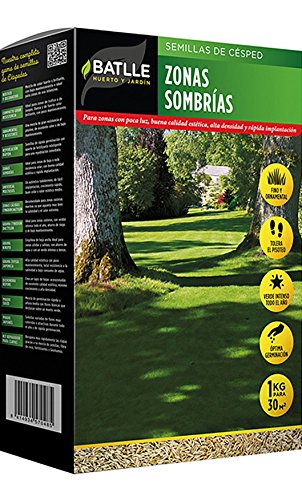

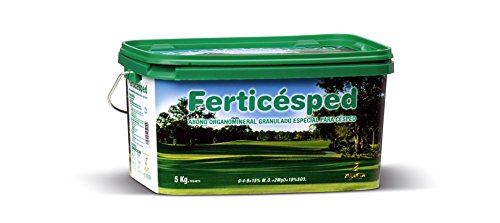
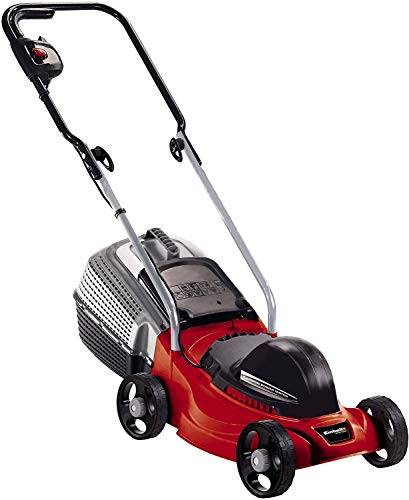
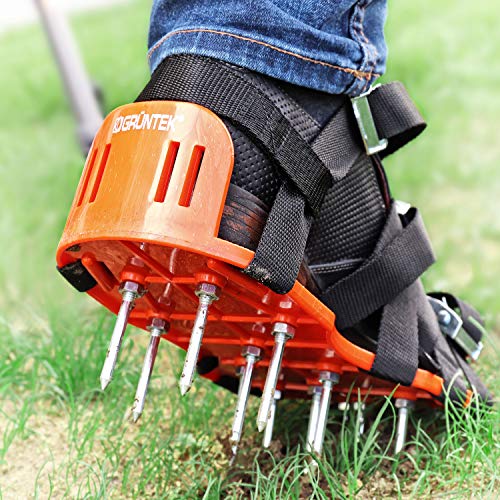
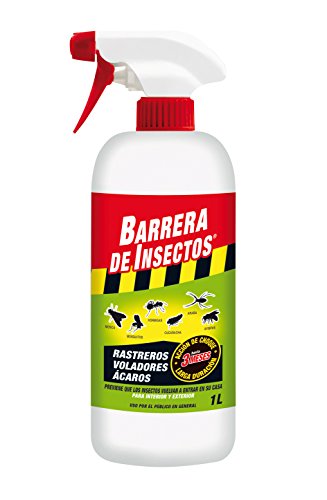

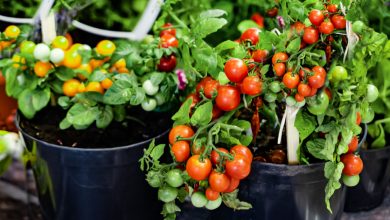

![Photo of Prune Kumquats: [Importance, Time, Tools, Considerations and Steps]](https://www.complete-gardening.com/wp-content/uploads/2021/06/Kumquats_1621092512-390x220.jpg)
